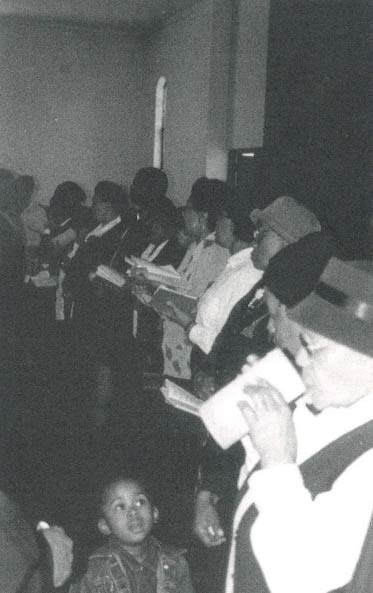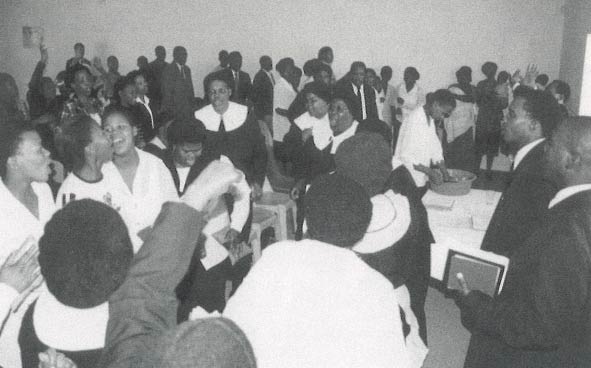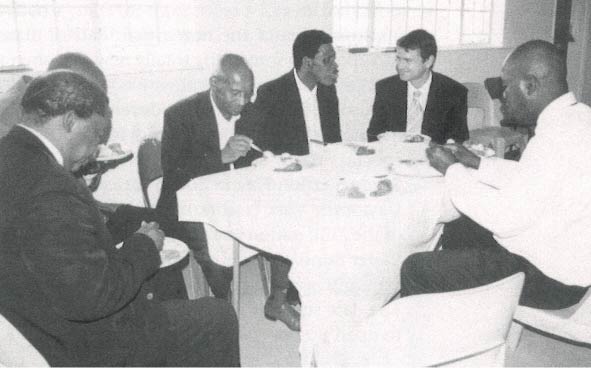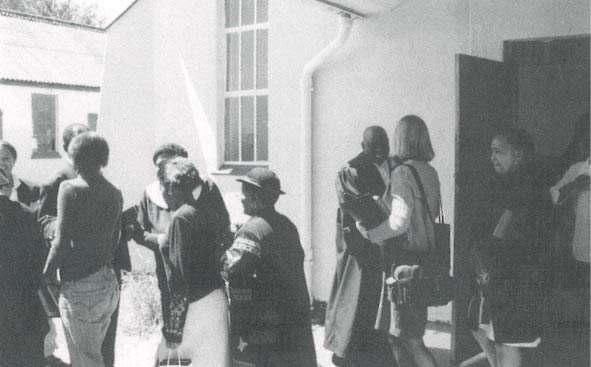Updated April, 2025
Reconciliation is a process. It is a long and often difficult road through truth and justice aimed at the restoration of broken relationships, in order to establish a new reconciled reality. There are no quick-fix solutions, no shortcuts or easy roads. The process of reconciliation that is taking place in the church in South Africa illustrates the challenges and offers guidelines for rituals of reconciliation that can help the church worldwide address its ongoing need for reconciliation.

A Multicultural Context
South Africa is a multicultural country with about eleven official languages. And since the demise of apartheid, many churches that were once divided on racial grounds are uniting. As a result, different cultures have to be accommodated in a single worship service. Along with this multicultural context, some scholars talk about a triad of simultaneous modes of existence in South Africa: pre-modern, modern, and post-modern (W. L. Van der Merwe, “Philosophy and the Multi-Cultural Context of (Post)Apartheid South Africa” in Ethical Perspectives, 1996).
South Africa’s first democratic election took place in 1994. Since then, there has been an increase in opportunities for many South Africans. But at the same time, there are many factors hindering the process of reconciliation: a high crime rate, poverty and an imbalance in the distribution of wealth, HIV/Aids, and other health challenges.
The following practical guidelines for rituals of reconciliation have their origins in this unique and challenging context.

Reconciliation Takes Time
Anthropologist Victor Turner described the social drama as a process through which a society in crisis moves. Gerald Arbuckle illustrates Turner’s social drama as follows:
Within this scheme, phase 3 (redressive action) is the phase of ritual. Much of South African society is currently in this phase. It is a time in which the need for ritual is great and where appropriate rituals of reconciliation can positively channel emotions, fears, and attitudes. Some have compared the process though which a society like South Africa has to move after the devastating effects of apartheid with the grieving process—complete with its stages of denial, anger and isolation, negotiation, depression, and acceptance. In her book on the South African Truth and Reconciliation Commission, Afrikaans poet and author Antjie Krog writes, “Yes. Piece by piece we die into reconciliation” (Country of My Skull).
The early church understood this process rather well. For that reason they developed their sacrament of reconciliation as a ritual spread over time and with four distinct phases: confession, penance, reconciliation, and partaking of the Eucharist. For the South African context this means that lament is a very important phase. Change brings with it a sense of loss and often requires a response of grieving (see Arbuckle, Grieving for Change). Grieving and lament can find expression in verbal form, as in the Psalms; by making use of symbols and rituals (an extinguished candle, an empty chair at the table, fasting, confession, silence, protest rituals); and—very important in Africa—by storytelling: people coming forward to give witness to their experience of the truth as perpetrators listen.
It is important that we not rush into this process of reconciliation. The African concept of time, which is more cyclical, is of great value here. The Western view of time is more linear and inclines us to rush things in order to move on. If there is one thing that Africa has that many other continents do not have, it is time. But it is also important to ensure that the process does move forward and is brought to a conclusion at some stage. Perhaps congregations should aim to move somewhere between a Western functional (too quick) concept of time and an African (sometimes too slow) concept of time. The liturgical year can be helpful here; for example, congregations can develop a reconciliation ritual that stretches over a whole season (such as Lent or Advent).

Types of Reconciliation Rituals
By looking at reconciliation rituals worldwide, different types can be identified. These include protest rituals, confession rituals, therapeutic/healing rituals, acceptance/forgiveness rituals, reintegrating/binding rituals, and reparation rituals. And they occur in different phases of the process. Recognizing the different types of reconciliation rituals can help congregations determine where in the reconciliation process they find themselves and what kind of rituals are appropriate to their situation. These are obviously not watertight categories that can be applied like a recipe, but they can provide congregations with insight into the process of reconciliation and guidelines for how to act.
For example, the metaphor “fast to feast” can be gleaned from the ritual process of reconciliation used in Africa. In Africa a reconciliation ritual is always concluded with some kind of commensality. Often a sheep or a goat is slaughtered, a large container of Umqombothi (African maize beer) is brewed, and the whole family, congregation, or community will come together to eat and drink and celebrate the consummation of the reconciliation process. If reconciliation is not achieved, no celebration will take place. Although the Dutch Reformed Church is not known to slaughter goats as part of its worship practices, the practice of commensality with regards to reconciliation as a means to “manage” the ritual time is not unknown. Think of the exclusion of sinners from the table of the Lord. This exclusion is aimed at bringing the sinner back to the church and to reconcile her with her neighbor, and the process culminates in partaking of the Lord’s Supper as a sacrament of reconciliation. Sometimes fasting is necessary in order to achieve a feast of reconciliation.
In the Xhosa culture this ritual of building up to a feast of reconciliation, which is also being used in some Reformed churches, follows a certain pattern:
- The community encourages the parties to start the process.
- Both tell their story with neutral parties listening, along with witnesses from the community.
- Umqombothi is brewed, an animal is slaughtered, and the community is invited to partake in the eating and drinking.
- The elders of the community/congregation drink first and the children last. The feast is accompanied by music and dancing.
When developing such a ritual, it is important to achieve a fine balance between continuity and discontinuity with the tradition. Honor the tension between tradition and renewal. Respect for (dis)continuity with the liturgical tradition is conducive for the appropriation of the new ritual. Rather than just incorporating something totally new, it is often wiser first to try and renew that which is already there.
Also, when we consider developing a ritual for reconciliation, it can be helpful to pay attention to special dates—such as December 16 (now Reconciliation Day in South Africa, previously the Day of the Vow, celebrating the white man’s defeat of the Zulu nation in 1838), September 11 (USA), or Easter Sunday. Such occasions can, in a temporal symbolic way, show why reconciliation is needed. The date suggests the reason for the ritual in order to open up new possibilities of reconciliation.

The Church’s Gift
In a world where God’s name is desecrated,
may his name be hallowed.
In the midst of political kingdoms at war with each other,
may his kingdom come.
In societies divided by injustice, class, or race consciousness,
where oppression grinds the faces of the poor into the dirt,
may his will be done.
In the midst of hope for a new tomorrow,
may our words and actions anticipate that day
as did those of our Lord.
In the face of anger and hatred,
may we learn to forgive and so be ourselves forgiven.
—When Prayer Makes News: Churches and
Apartheid—A Call to Prayer. ©1986 Westminster John Knox Press.
Used by permission of Westminster John Knox Press.
O Lord,
we can never fully comprehend
the length, breadth, depth and height of your love:
but we pray that that love may so transform us
through your suffering
as to make us reach out to
the despairing and the desperate
and work for peace and reconciliation between all people:
for Jesus’ sake, hear our prayer. Amen.
—Douglas Bax, in Cry Justice! Prayers, Meditations and Readings from South Africa
by J. W. De Gruchy. London: Collins Liturgical Publications, 1976.
God bless Africa.
Guard her children,
guide her leaders,
and give her peace;
for Jesus Christ’s sake.
Amen.
—This “Prayer for Africa” is being used in the conclusion of the liturgy
of many churches in South Africa.
It’s time to stimulate the imagination of churches everywhere in using and developing this resource for ritual reconciliation. The church, as the body of Christ, the Great Reconciler, must strive to be his shining example of reconciliation.

